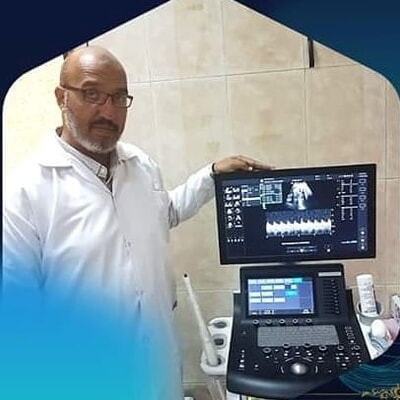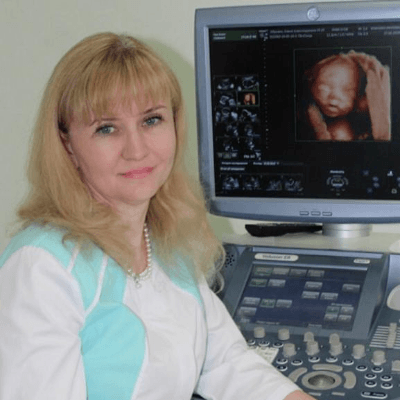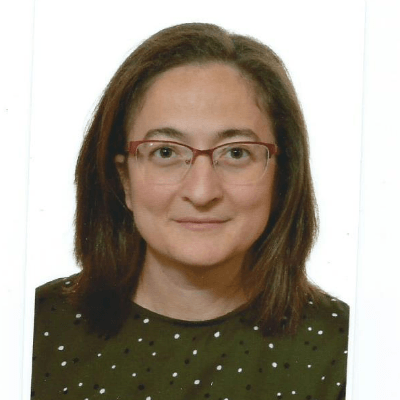Case 2: Imaging at 31 weeks gestation shows meconium ileus with bowel volvulus likely occurring a few weeks prior and seen at late stage, secondary to Cystic Fibrosis
Case 2 is a similar to Case 1, and shows bowel volvulus at a later stage. Ultrasound (Images 6-8, Video 3-4) revealed bowel dilation, lack of peristalsis, ascites and a unilateral hydrocele secondary to ascites. Interestingly, there was a mass-like cluster of bowel loops with neither a lumen, peristalsis, nor whirlpool sign visible. There was no polyhydramnios and the stomach was not distended. Fetal MRI (Images 9-11) was performed a few days later, and showed dilated bowel containing meconium, proximal to a few tiny bowel loops in circles, without the pathognomonic whirlpool sign. Some normal bowel loops could be seen distally in the right flank. There was a microcolon as expected. The ascites seemed mild, less marked than on ultrasound. We diagnosed meconium ileus, with likely a bowel volvulus occurring a few weeks prior, which had healed. Bowel atresia secondary to volvulus, if any, can only be diagnosed at autopsy or surgery. Amniotic fluid analysis revealed Cystic Fibrosis (F508 deletion, homozygous) and the parents chose medical abortion. No autopsy was done.
Case 3: Imaging at 32 to 35 weeks gestation showing hyperechoic small bowel and small gallbladder secondary to Cystic Fibrosis
Prenatal ultrasound (Image 12 and 13) showed hyperechoic bowel, without significant dilation, and a small gallbladder. Amniotic fluid analysis revealed Cystic Fibrosis (heterozygous state, with a Y122X mutation on one copy of the CFTR gene, and a deletion of the exons 17a-18 on the other copy of the CFTR gene). The parents chose to pursue the pregnancy.
Case 4: Imaging at 22 weeks gestation showed mildly dilated, hyperechoic small bowel with non-visualization of the gallbladder, secondary to Cystic Fibrosis
Prenatal ultrasound (Images 14-15, Video 5-6) showed hyperechoic bowel with mild dilation. The gallbladder was not seen. This is known as the classic triad of cystic fibrosis signs on ultrasound. Amniotic fluid analysis revealed Cystic Fibrosis (heterozygous state, with a Y122X mutation on the one copy of the CFTR gene, and an F508 deletion on the other copy of the CFTR gene). The parents chose to abort the pregnancy.
Discussion
In bowel obstructive conditions, one finding can hide the other. In small bowel atresias for example, the first atresia may hide other atresias or an apple-peel syndrome. There is currently no reliable way on prenatal imaging, ultrasound or MRI, to predict multiple atresias [1]. There has been discussion of whether or not the visibility/absence of the distal bowel, and the visibility/absence of a microcolon on imaging could be used as predictive factors. In cystic fibrosis, the pathology is not usually bowel atresia, but meconium ileus defined as the lack of progression of the meconium due to its thickness. Volvulus can also occur with secondary atresia.
On MRI, the meconium signal is unusual in cystic fibrosis. In normal conditions, the meconium is expected to feature marked T1 hyperintensity compared to the liver. In cases 1 and 2, the meconium shows mild hyperintensity, almost isointensity, compared to the liver. Our MRI findings are consistent with findings reported by Carcopino et al in which four fetuses with echogenic bowel on ultrasound are retrospectively analyzed: two with ileal atresia without cystic fibrosis, and two with meconium Ileus and cystic fibrosis [2]. Regarding this peculiar MR characteristic of meconium, one theory speculates that what makes meconium hyperintense on T1 sequences is the rich content in bile acids. In cystic fibrosis, the bile acids are less concentrated, hence less T1 signal intensity [3,4].
References:
[1] Rubio EI, Blask AR, Badillo AT, et al. Prenatal magnetic resonance and ultrasonographic findings in small-bowel obstruction: imaging clues and postnatal outcomes. Pediatr Radiol. 2017 Apr;47(4):411-421.
[2] Carcopino X, Chaumoitre K, Shojai R, et al. Use of fetal magnetic resonance imaging in differentiating ileal atresia from meconium ileus. Ultrasound Obstet Gynecol. 2006 Dec;28(7):976-7.
[3] Righetti C, Peroni DG, Pietrobelli A, et al. Proton nuclear magnetic resonance analysis of meconium composition in newborns. J Pediatr Gastroenterol Nutr. 2003 Apr;36(4):498-501.
[4] Zizka J, Elias P, Hodik K, et al. Liver, meconium, haemorrhage: the value of T1-weighted images in fetal MRI. Pediatr Radiol. 2006 Aug;36(8):792-801.
















